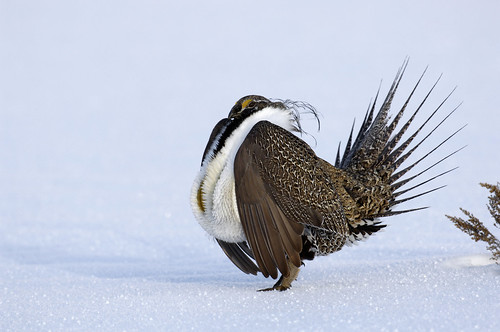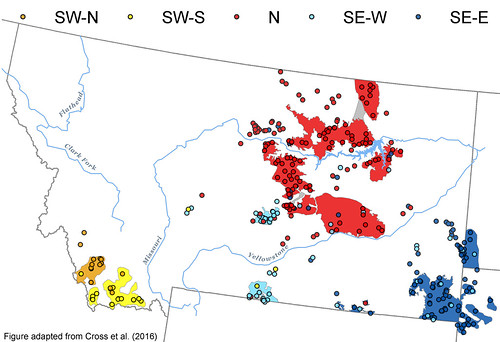
Sage grouse male strutting hoping to attract females.
The greater sage grouse is an iconic bird that lives in the American West’s sagebrush landscape. It’s also a species at the center of a nationwide debate focused on how best to manage its habitat to balance multiple uses and ensure the bird’s long-term survival.
And the dialogue has just been informed by new information from a genetics study that has validated the primary target locations of current conservation efforts.
Though sage grouse were once numerous, their populations have dwindled drastically from historic numbers. Their range is still impressively large, though. Sage grouse are spread across a staggering 258,000 square miles.
Since the remaining population inhabits such a vast landscape, partners working to conserve the sagebrush ecosystem focus efforts within Priority Areas for Conservation or PACs, which represent the habitat most critical for maintaining sage grouse populations. Understanding the population structure and genetic diversity within the species is also important for guiding ongoing conservation and restoration efforts.
A new study found that the genetic subpopulations of sage grouse are synonymous with the existing management boundary of the PACs. This is important because validating the biological relevance of the existing PACs helps land managers plan conservation projects to more effectively manage sage grouse.
Todd Cross, a wildlife biologist with the University of Montana and U.S. Forest Service Rocky Mountain Research Station, worked with partners from the U.S. Forest Service, the Bureau of Land Management, states, and the NRCS-led Sage Grouse Initiative.
“We were thrilled to discover that existing management boundaries agree with genetic population structure,” said Cross. “It was a privilege to work with great minds from many backgrounds. We were able to combine expertise in wildlife management, landscape ecology, and genetics through this fantastic science partnership.”
Results show five subpopulations that occupy significantly different elevations and are surrounded by different dominant subspecies of sagebrush.
“The state agencies we work alongside had great foresight in creating these priority areas for conservation, and we hope that our results can help inform their continued efforts in conservation planning and sage grouse management,” Cross added.

Five greater sage grouse subpopulations exist across Montana, North Dakota and South Dakota. Individual grouse (points) are colored by population membership. The sixteen priority areas for conservation (polygons) sampled are colored according to proposed management groups that reflect genetic substructure.
No comments:
Post a Comment
Note: Only a member of this blog may post a comment.